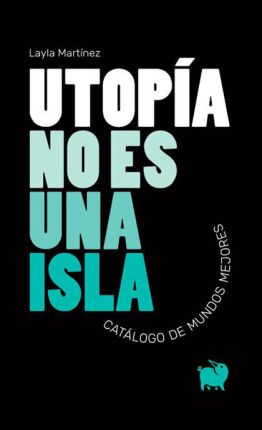'Ok, doomer'. Climate anxiety and imaginaries of collapse
- Dossier
- Oct 22
- 9 mins
The collective expression of fear turns individual anxiety into collective paralysis, and, as far as the climate crisis is concerned, this is the fastest and surest road to disaster. Joining forces and rallying together allows fear to be turned into political action. Climate fatalism may be the most dangerous attitude. However, no matter how bad the situation, the smart thing to do is always to try.
The heatwave in May this year left us emotionally drained. High temperatures affect the body in many ways – they may cause Climate fatalism conceals a certain desire for collapse to happen, because it would help restart civilisation under different premises.xhaustion or exacerbate diseases such as diabetes – but that was not the only issue. Reaching forty degrees in the month of May made the climate crisis tangible, as tangible as the perspiration trickling down our skin. Suddenly, we could no longer ignore it. Ocean warming or species extinction seem to be far-off events, removed from our everyday reality, but perspiration and sunburnt skin made the reality of the climate crisis seem like a slap in the face.
The immediate outcome was a dizzying rise in collective anxiety. Conversations on public transport, on social media and in the workplace were fraught with anxiety. The heatwave heralded a future of extreme temperatures, giving as a taste of what was yet to come. Imaginations ran wild, fuelled by the dystopias that have been shaping our vision of the future for decades. Rather than science fiction, post-apocalyptic cinema were reminiscent of a prediction of the future more than ever.
May’s heatwave passed and anxiety subsided, but its effects remained. This was followed by another in July, proving that it was not a one-off occurrence. The emotional exhaustion produced by fear affects the way we relate to the climate crisis, the way we deal with it. When anxiety finds no outlet, it can trigger paralysing behaviour. This paralysis can make us play it down, trying to convince ourselves it is no big deal. It can also bring us to disengage, to consider it an issue to be tackled by politicians and that the measures taken should exclusively target the upper classes, who are those who generate the biggest carbon footprint. Another possibility is that it generates escapist fantasies, largely to go live in the countryside, in an idealised vision of the rural world that is unrelated to its reality. Paralysis can also lead us to fatalistic attitudes, to believe that the problem is so big that nothing can be done and, at its worst, to believe that we must accept that life on the planet will come to an end.
These attitudes are understandable since they stem from fear and it is perfectly natural to worry about a phenomenon that puts our very survival on the planet in jeopardy. The problem isn’t feeling fear, but what we do with it. The problem arises when we turn these attitudes into political positions and try to convince others to take the same stance. This collective expression of fear turns individual anxiety into collective paralysis and, as far as the climate crisis is concerned, that is the fastest and surest road to disaster. If we endeavour to convince others that the climate crisis is no big deal, what we are actually doing is contributing to our failure to rally together to curb its most dangerous effects. It is similar when we insist that nothing should be demanded of the working classes until it is demanded of the upper classes.
While it is certainly unfair to demand accountability from us when something as polluting and unnecessary as private flights or yachts are still allowed, it doesn’t seem very smart either to wait for the upper classes to take responsibility for a collective problem, because past experience shows us that this does not usually happen. Social justice should be an essential ingredient in the fight against climate change, but there will be no social justice if we do not force it, and we cannot do so without getting involved in the movement. What’s more, turning escapist fantasy into a political option does not seem very helpful either: rolling out an ecological transition that can tackle the climate crisis shall come up against fierce resistance that cannot be overcome by simply giving up. Oil companies, airline operators and the meat industry, to name but a few of the most polluting sectors, won’t stop operating unless they are forced to do so. Moreover, rural areas will be affected by the climate crisis as much as the urban environment; in fact, its effects may begin to be felt earlier in the rural environment due to its dependence on the primary sector and the lack of infrastructures that can provide assistance in critical situations.
It seems rather paradoxical to write off the fight when nothing has yet been tried, but climate fatalism is an attitude more widespread than it seems.
The danger of climate fatalism
But the most politically dangerous attitude may be climate fatalism. It seems rather paradoxical to write off the fight when nothing has yet been tried, when not even flights or macro-farms, for example, have been limited, but it is definitely an attitude that is more widespread than it seems. In his book How to Blow Up a Pipeline (Verso Books, 2021), Swedish activist Andreas Malm points to the case of authors such as Jonathon Franzen[1] and Roy Scranton,[2] who have devoted columns and books to the subject. Again, individually we can understand this attitude as a product of fear, but when a column or a book is written about it, it is turned into a political position, insofar as an attempt is made to convince people to adopt the same position as the author. But why would anyone want to convince others to let themselves die?
On social media, people adopting these positions have been dubbed doomers. Their tweets, posts and columns are often answered with the meme ok, doomer, mocking their fatalistic nihilism in a similar manner to the way the reactionary views of baby boomers are criticised with the meme ok, boomer. This may give us a first indication of the existence of a generation gap when it comes to attitudes towards the climate crisis, something that was also seen in the last wave of movements, led by teenagers and young people. But there is also a gender gap: public positions supporting the theory of collapse are always or almost always taken by men. Malm points out that these stances are related to individual incapacity: as I am incapable of imagining a solution to the problem or of doing anything to stop it, I assume it is impossible. He does not relate it to masculinity, but the connection is not difficult to make if we consider that patriarchy identifies white males as the universal subject and relegates everyone else to the position of the other. It is more likely to be a white male who elevates his individual incapacity to the universal norm than a woman or a racialised person, because he has been educated to believe that he is, precisely, the universal subject. If I, Jonathan Franzen, am unable to do anything, how can anyone stop the climate crisis?
 Illustration. © Susana Blasco / Descalza
Illustration. © Susana Blasco / DescalzaThe fight against the climate crisis has an essential care component. Men are leaving us alone to take care of the planet as they have left us alone to look after everything else.
But there is a further question that links these fatalistic positions to hegemonic masculinity. On some occasions, this fatalism conceals a certain desire for collapse to happen, because it would help restart civilisation under different premises. This clearly draws on cinema and television’s dystopian imaginary, where we have seen films and series to the point of boredom in which a group of people survive a catastrophe, be it a natural disaster or a zombie apocalypse, from Station Eleven to The Walking Dead, to name but a few of the most recent ones. If such a scenario were to occur, the reality is that we would die of something that today seems as mundane as a tooth infection or a cut from a tin can, but it seems that the person making this wish sees themselves as the survivor who founds the new civilisation rather than the wretch who dies from consumption. Here, again, we see hegemonic masculinity in spades, as well as loads of ableism, because only those who do not think about vulnerable groups such as children, or dependent or chronically ill people, can defend this stance. Moreover, the fight against the climate crisis has an essential care component: it is largely about restoring ecosystems, cleaning up pollution, caring for the other creatures that inhabit the planet, healing the metabolic rift, as Rebecca Clausen[3] points out. In the imaginary of hegemonic masculinity, this is something traditionally associated with femininity, which is why many men do not find it attractive or are directly repulsed by it. Men are leaving us alone to take care of the planet as they have left us alone to look after everything else.
To prevent fear from making us wallow in these paralysing attitudes, we can collectively express that fear in other ways, for example by participating in organisations that fight the climate crisis in whatever form it takes. This is not without its frustrations and disappointments, but it allows us to turn fear into political action rather than paralysis. In this respect, we could learn from the experience of the fight during the AIDS crisis in the 1980s. It is hard to imagine a more terrible situation than that of those activists: the stigma and violence against LGBT people, who were accused of spreading the disease, was compounded by the fear of contracting the virus and the sadness of seeing friends and partners fall ill and die. However, out of that pain, sadness and anger, groups like Act Up[4] managed to launch a movement that not only confronted homophobia and the stigmatisation of the disease, but also looked after its most vulnerable members.
Sharing fear not only reduces the anxiety it arouses; it also allows it to be turned into collective action. We don’t know how effective these actions will be, but what we can be sure of is that inaction leads to disaster. What’s more, in the case of the climate crisis, something is better than nothing: a rise of one degree is better than two, and two is better than three. No matter how bad the situation, the smart thing to do is always to try.
[1] “What If We Stopped Pretending?”, in The New Yorker.
[2]Aprender a vivir y morir en el Antropoceno (Errata Naturae, 2021).
[3] “Healing the Rift”, in Monthly Review.
[4]Act Up’s archive can be seen on the website https://actupny.org/. The film 120 BPM (Beats per Minute) (Robin Campillo, 2017) also provides a good overview of its history.
Recommended publications
 Utopía no es una isla Episkaia, 2019
Utopía no es una isla Episkaia, 2019 Carcoma Amor de Madre, 2021
Carcoma Amor de Madre, 2021
The newsletter
Subscribe to our newsletter to keep up to date with Barcelona Metròpolis' new developments




